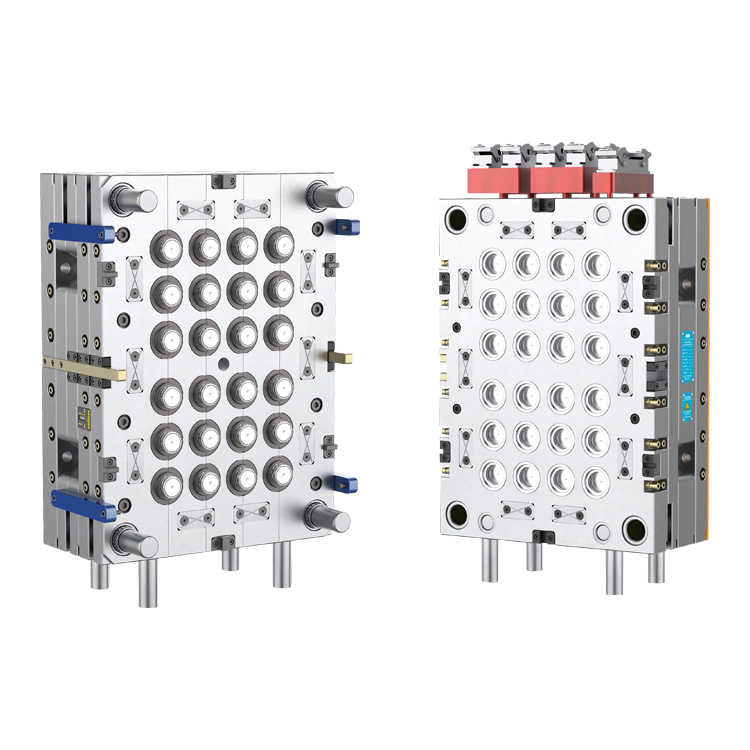Precision Cooling: Optimizing the Cooling System in a 24-Cavity Cap Mold for Uniformity
2024-01-17
Introduction:
In the intricate world of injection molding, achieving uniform cooling across multiple cavities is crucial for producing high-quality caps consistently. The cooling system in a 24-cavity cap mold plays a pivotal role in determining the efficiency of the molding process. This blog delves into the strategies and technologies employed to optimize the cooling system, ensuring uniform cooling and, consequently, precision in the production of 38mm caps.
1. Strategic Cooling Channel Placement:
The design of the mold incorporates strategically placed cooling channels to ensure even heat dissipation. Engineers carefully map out the layout of these channels, taking into account the specific geometry of the cap and the distribution of cavities to achieve uniform cooling.
2. Balanced Cooling Channel Sizes:
To maintain uniform cooling, the cooling channels are designed with balanced sizes across all cavities. This prevents variations in cooling rates and ensures that each cavity experiences consistent cooling conditions, minimizing the risk of defects or inconsistencies in cap dimensions.
3. Conformal Cooling Technology:
Conformal cooling involves creating cooling channels that follow the contours of the mold cavity. This advanced technology allows for more efficient heat transfer, reducing hot spots and achieving greater uniformity in cooling across all cavities.
4. Baffle Systems:
Baffle systems are strategically placed within the mold to control the flow of coolant and enhance uniform cooling. These baffles help direct coolant to areas that may experience higher temperatures, ensuring that no cavity is subjected to uneven cooling.
5. Variable Cooling Rates:
In some cases, the cooling system is designed to allow for variable cooling rates. This approach recognizes that different sections of the mold may require different cooling intensities. By adjusting cooling rates, engineers can achieve a balance that ensures uniform cooling across all cavities.
6. Efficient Heat Transfer Materials:
The choice of materials for the mold inserts and the cooling channels themselves is crucial. Materials with high thermal conductivity, such as copper alloys, are often selected to facilitate efficient heat transfer and maintain uniform temperatures throughout the mold.
7. Temperature Control Systems:
Advanced temperature control systems are integrated into the mold to monitor and regulate the cooling process. These systems may include sensors and actuators that adjust coolant flow or temperature based on real-time feedback, ensuring precise control over the cooling environment.
8. Sequential Valve Timing:
Some molds incorporate sequential valve timing, a feature that controls the timing of coolant flow to different sections of the mold. This sequential approach helps manage cooling rates and ensures that each cavity experiences optimal cooling conditions.
9. Simulation and Modeling:
Before physical production, mold designs can be simulated and modeled using computer-aided design (CAD) software. This allows engineers to predict and optimize cooling performance, ensuring uniformity before the mold is manufactured.
10. Insulation Control:
To prevent temperature variations between cavities, insulation control measures may be implemented. Insulating certain areas of the mold or adjusting insulation thickness helps manage heat distribution and promotes uniform cooling.
Conclusion:
Achieving uniform cooling in a 24-cavity cap mold is a multifaceted process that combines strategic design, advanced technologies, and precise control systems. The optimization of the cooling system is paramount in ensuring consistent quality, minimizing defects, and enhancing the overall efficiency of the injection molding process for 38mm caps. As technology continues to advance, the pursuit of precision cooling remains central to the evolution of injection molding capabilities.



